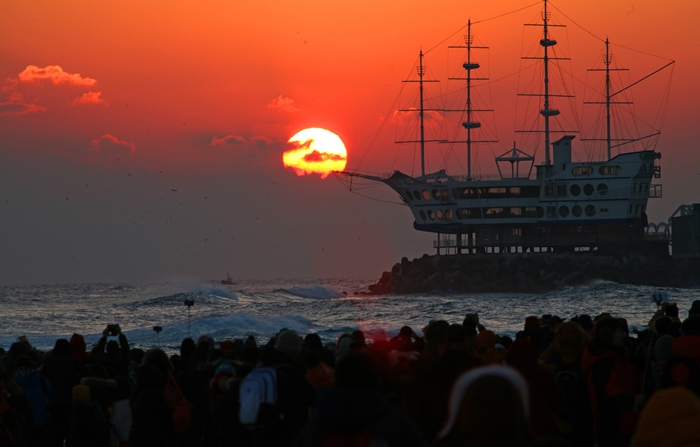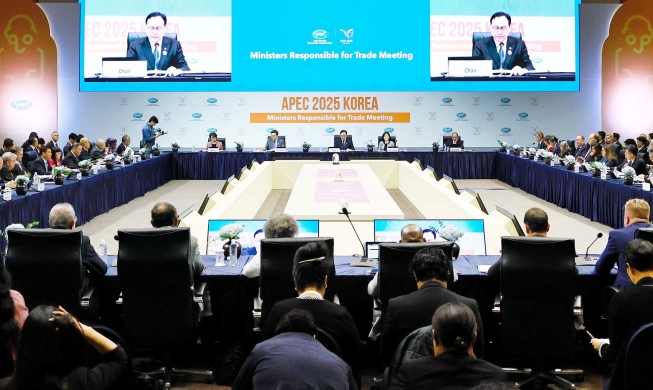
Homigot Square in southern Pohang, on the eastern edge of the Korean Peninsula, will hold a New Year's festival to greet 2018 on Dec. 31. The spot is named after its geographical shape, which resembles the tale of a tiger. The photo shows the New Year's sun rising above the statue of a hand, which symbolizes harmony. (Pohang Cultural Foundation)
By Kang Gahui and Yoon Sojung
It's time to see out the old year and welcome in the new year!
In two days' time, we'll see the first sun of 2018 on the day of Musul (무술년, 戊戌年).
People will gather to bid adieu to the old year and to mark the new year with various festivals and events all across the country, including many in the Seoul region.
One of the most iconic New Year’s Eve events in Korea is the bell-ringing at the Bosingak Pavilion in Jongno-gu District, downtown Seoul.
At the Bosingak Pavilion, the bell-ringing ceremony will be held from 11:30 p.m. on Dec. 31 to 12:30 a.m. on Jan. 1, and various dignitaries and celebrities will ring the bell a total of 33 times.
Ever since Joseon’s founding, the Bosingak bell has been used to officially announce the start of the new day. Since 1953, a few years after independence and war, people rang the bell to greet the new year.
The bell-ringing ceremony holds various meanings. It contains wishes for health and wellbeing, happiness, and prosperity for the country at a broader level. It also includes wishes for good luck and happiness for individuals in the new year.
A brand-new but un-missable New Year’s event this year will be held at the Lotte World Tower in Songpa-gu District, southern Seoul.
As the fifth-tallest building in the world, a variety of events will be held between 8:30 p.m. on Dec. 31 and 1 a.m. the next day. They include a laser light show and a countdown with paper snowflake confetti. The building will showcase a fireworks show for 555 seconds (9 minutes and 15 seconds), symbolizing its height of 555 m.

Jeongdongjin is one of the most famous spots to view the sunrise in Korea. It's also known for its train station, which is the nearest to the sea in the country. (Gangneung City)
The next day, Jan. 1, people will flock to selected spots across the country to greet the rising sun of New Year’s Day.
In Korea, many popular sunrise spots are located along the coast of the East Sea. One of them is Jeongdongjin, a place also known as the filming location for the 1995 hit TV show “Sandglass” (모래시계).
At the Ganjeolgot in Ulju-gun County in Ulsan, people can see the earliest sunrise on land anywhere on the Korean Peninsula. The sunrise is predicted to start at exactly 7:21 a.m. on the morning of Jan 1. There will be a sunrise festival there that will start at 6:40 a.m. with performances and other events to mark the new year. It also includes a kite flying show. The kite show will include 1,000 connected kites to mark the city’s 1,000-year-old name, Ulju (울주).
The Homigot in southern Pohang got its name for its shape, which is said to resemble the tail of the tiger that is the entire Korean Peninsula. A two-day New Year’s festival will be held there starting on Dec. 31. It will host another special event, too, to mark the PyeongChang 2018 Olympic and Paralympic Winter Games.
kgh89@korea.kr
